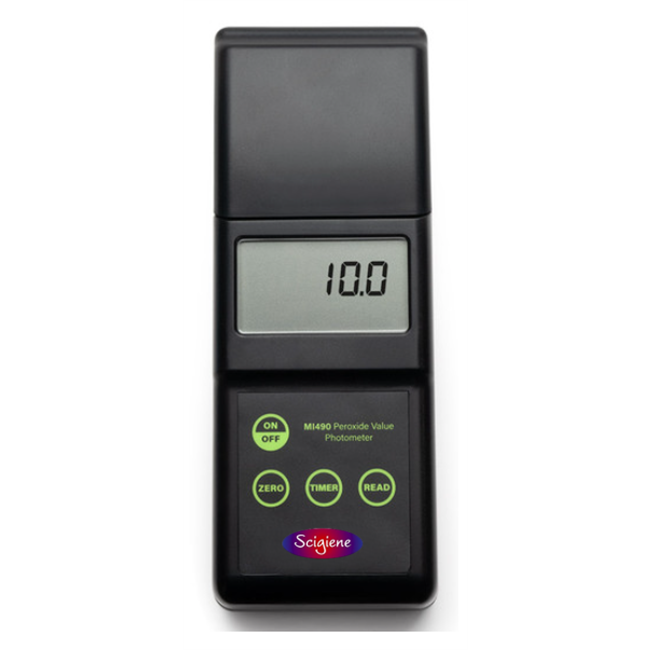
The measurement of the oil's chemical degradation is the peroxide value, which measures the degree to which the oil is oxidized. Rancidification is the decomposition of fats and other lipids by hydrolysis and/or oxidation. Hydrolysis will split fatty acid chains away from the glycerol backbone in glycerides. These free fatty acids can then undergo further auto-oxidation. Oxidation primarily occurs with unsaturated fats by a free radical-mediated process. One of the most widely used tests for oxidative rancidity, peroxide value is a measure of the concentration of peroxides and hydroperoxides formed in the initial stages of lipid oxidation. Milli-equivalents of peroxide per kg of fat are measured by titration with iodide ion. Peroxide values are not static and care must be taken in handling and testing samples. It is difficult to provide a specific guideline relating peroxide value to rancidity. High peroxide values are a definite indication of a rancid fat, but moderate values may be the result of depletion of peroxides after reaching high concentrations. NOTE: This unit is ONLY for oil testing
Features & Specifications:
| Part # | Description | Price |
| MW-Mi490 | Peroxide Value Photometer | Call for pricing |
| MW-Mi590-021 | Peroxides reagent set (21 tests) | Call for pricing |
| MW-Mi0001 | 10 mL GLASS CUVETTE FOR PHOTOMETERS (2PCS) | Call for pricing |
| MW-Mi0002 | CAP FOR GLASS CUVETTE (Mi 0001) - 2 PCS | Call for pricing |
| MW-Mi0003 | STOPPERS FOR FOR GLASS CUVETTE (Mi 0001), 2 PCS | Call for pricing |